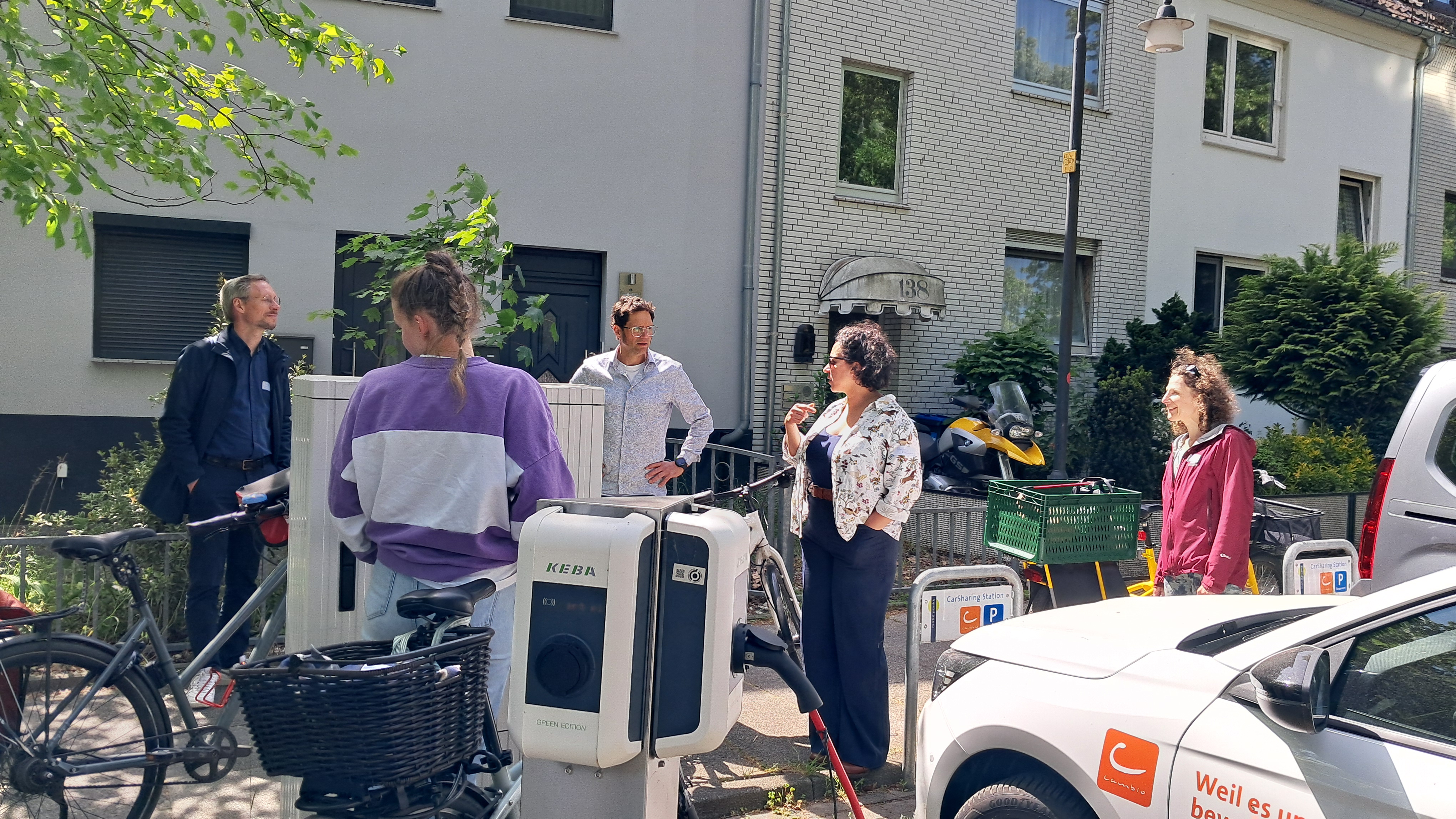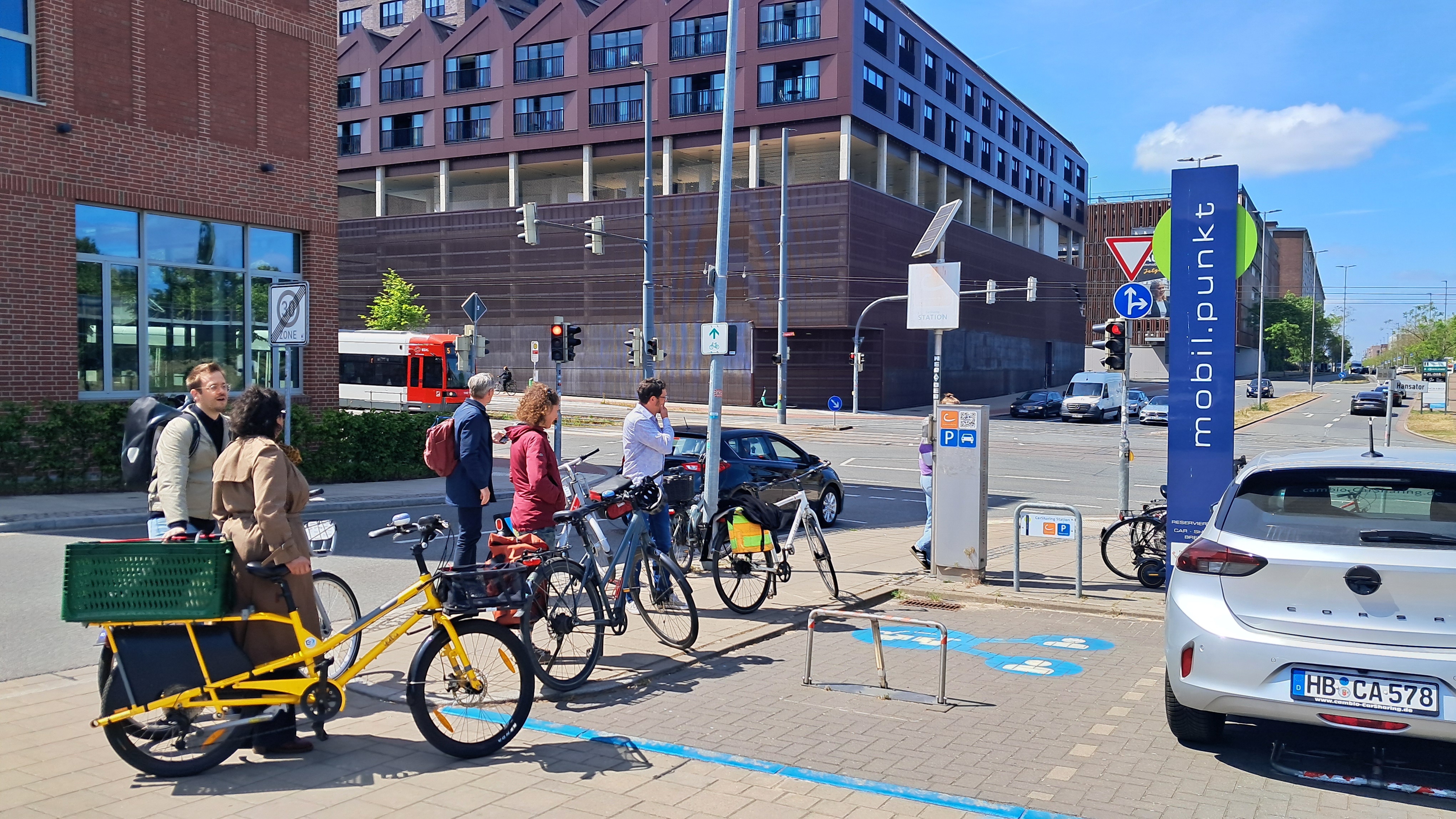Architects, with the ‘A’ of Allies. Architects are essential stakeholders when it comes to integrating shared mobility solutions into our cityscape and housing projects. Bremen and the local Chamber of Architects hosted a seminar for architects who wanted to learn more about this.
Shared mobility will save us
What do the people in this picture have in common?

The ambition to better integrate shared mobility into housing projects! The reasons for doing so are obvious:
Because it saves resources
Because it saves space
Because it saves money
Because it makes housing more affordable
Because it makes daily travel more sustainable. And that makes our cities future-proof and more resilient to the effects of climate change.
A growing number of architects are interested in the benefits of shared mobility and are willing to incorporate it into their designs for ecological, economical and space-saving reasons. Therefore, the Free Hanseatic City of Bremen and Bremen's Chamber of Architects hosted the seminar “Carsharing and Other Sharing Modes”. This is part of the training series “Mobility Management under the MobilitätsBauOrtsGesetz” - Bremen's Mobility (Parking) Bylaw. The series consists of four modules, namely (1) the parking bylaw itself, (2) car and bike sharing, (3) bike parking, and (4) communication.
On the 21st of May 2025, a group of Bremen-based architects gathered to learn more about shared mobility. The day started with a theoretical session presented by Rebecca Karbaumer (Free Hanseatic City of Bremen). With her, the architects dived deeper into car and bike sharing, and focused on how to integrate it into real estate projects as part of the (for non-German speakers unpronounceable) Mobilitäts-Bau-Ortsgesetz. New this year was the focus on bike sharing. This is because Bremen recently launched a brand-new citywide bike sharing system: BreBike!

Let's hop on those BreBikes and explore the city's shared mobility offer!
Why bike sharing rocks!
We all know that cycling is cool, and that bike sharing rocks – especially in a flat, cycle-friendly city like Bremen. As a part of the morning session, the architects dived deeper into the benefits of bike sharing.
It gets people moving - Bike sharing inspires more people to opt for active mobility and often leads to more people buying their own bikes.
It boosts sustainable travel - Less driving, more cycling: bike sharing helps to shift habits in the right direction.
Say goodbye to traffic jams - More bikes on the road means fewer cars clogging up the streets.
Cleaner air, happier planet -Cycling produces zero emissions. That is good for the climate, and great for your lungs.
The perfect last-mile fix – Do you need to get from the train station to the office? Bike sharing has got you covered.
It is easy on the wallet – No big costs, no maintenance. Just hop on that bike and ride!
It supports local shops – People on bikes tend to stop and shop more often. Excellent good news for neighbourhood businesses!

Exploring Bremen's world-famous Mobil.Punkt.
The do’s and don’ts of car sharing
After a morning of theory, the group jumped onto specially rented BreBikes and joined car sharing expert Fleming Erdwiens (cambio carsharing) for a hands-on tour. He shared key insights on what makes a great car sharing station.
What do developers need to look out for? What are common pitfalls? And how can these stations be smoothly integrated into city spaces? Here are some Do’s and Don’ts that architects should keep in mind!
Location, location, location!
A carsharing station should be easy to find and even easier to reach. Ideally, it is closely situated to where people live, work, or catch the train.
Make it visible.
Hidden stations are an absolute no-go. Good signposting, good lighting, and a clear layout help everyone know: “Hey, this is a car sharing station!”
Do not OVERSIZE the offer.
Never start with too many cars: this is not economically viable. Let the offer grow organically!
One more thing...
Communication is key! Future buyers, renters, residents, or employees should always know what mobility options are available. They should be aware of the offer before they move in, right when they arrive, and while they are using the building. The sooner people know, the more likely they will actually use of car and bike sharing!
In short: visibility of the shared modes is crucial to its success!
Pictures of the site visit
Credits
Text by Cornelia Cordes (Freie Hansestadt Bremen)
Edited by Jelten Baguet (Mpact)
Pictures by Freie Hansestadt Bremen
